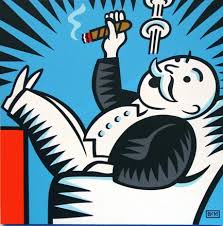It is the Same Game – Monopoly!
 Many of us as teenagers played the game of Monopoly®. Elizabeth Magie invented Monopoly® in 1904. It was originally called, “The Landlord’s Game.” She registered and received a patent for the game. Not much happened with the game until in 1924, when she updated it and got a new patent. Then hand-made versions of the game started to sell.
Many of us as teenagers played the game of Monopoly®. Elizabeth Magie invented Monopoly® in 1904. It was originally called, “The Landlord’s Game.” She registered and received a patent for the game. Not much happened with the game until in 1924, when she updated it and got a new patent. Then hand-made versions of the game started to sell.
In 1933, Parker Brothers bought the patent rights for $500. The fantasy elements of the game regarding becoming a real estate tycoon during the time of the Great Depression of 1929 to 1939 helped make the game popular.
Real Estate Portfolios
Assembling a valuable real estate portfolio in real life is similar to the Monopoly® game. The real estate investor, who is clever, buys one property and use the value of the first property to leverage up and buy more properties.
There is great value in assembling a group of properties that are adjacent. The sum of the parts is worth more than the individual pieces, especially in the case of using the land for a larger development.
Specializing in this method of assembling groups of properties and selling the lot to a larger development company can reap amazing rewards.
Build Portfolio Value
A real life example shows how much value is possible in acquiring a group of properties in the best location.
During the years of 1999 and 2000, two real estate developers, Jonathan Fryd and Michael Comras, quietly bought up the adjacent properties from 1001 Lincoln Road to 1035 Lincoln Road in Miami Beach’s most prestigious area. This is an entire block of properties. They paid US$12 million for all of the properties in total.
They renovated the properties and got fantastic long-term high-profile tenants like Apple, Gap, and Nike.
Over a 16-year period the area became equivalent to Rodeo Drive in Beverly Hills, California. The rents for the retail properties on Lincoln Road in this special spot are, on average, $300 per square foot.
Note that Lincoln Road is not on the beach, it is much further inland. Why Lincoln Road became “the” place for high-end retail is a bit of a mystery. Certainly, the efforts of Jonathan Fryd and Michael Comras are partially responsible.
It all began with the assembly of sufficient properties to allow a substantial new development to occur.
In September of 2015, Jonathan Fryd and Michael Comras decided to sell the properties. The sales price was a whopping US$370 million, giving them a return on their investment of 3,000% or about 187% per year for the 16 years they held the properties.
A Spanish billionaire named Amancio Ortega bought the properties. Ortega made his fortune in fashion with an internationally famous company called Zara. This was the second-largest real estate deal in the history of Miami-Dade County.
Summary
Just about everyone has heard the adage in real estate of location, location, location. This takes on new meaning when a clever real estate investor thinks like Monopoly® and assembles properties next to each other in a great location.
The upside potential from this method of investing is outstanding.